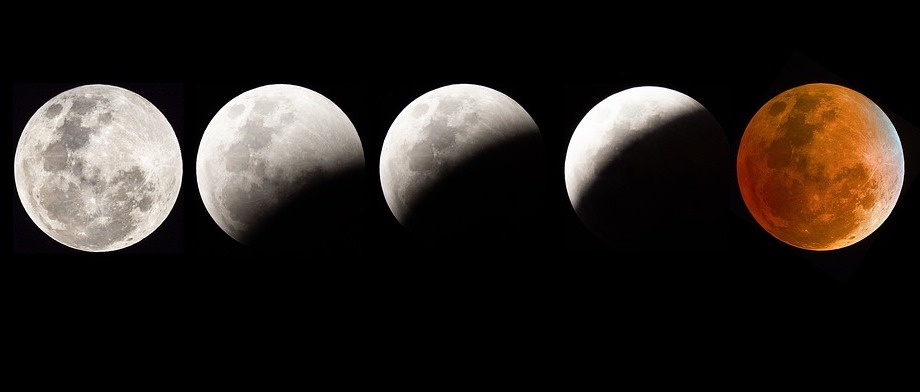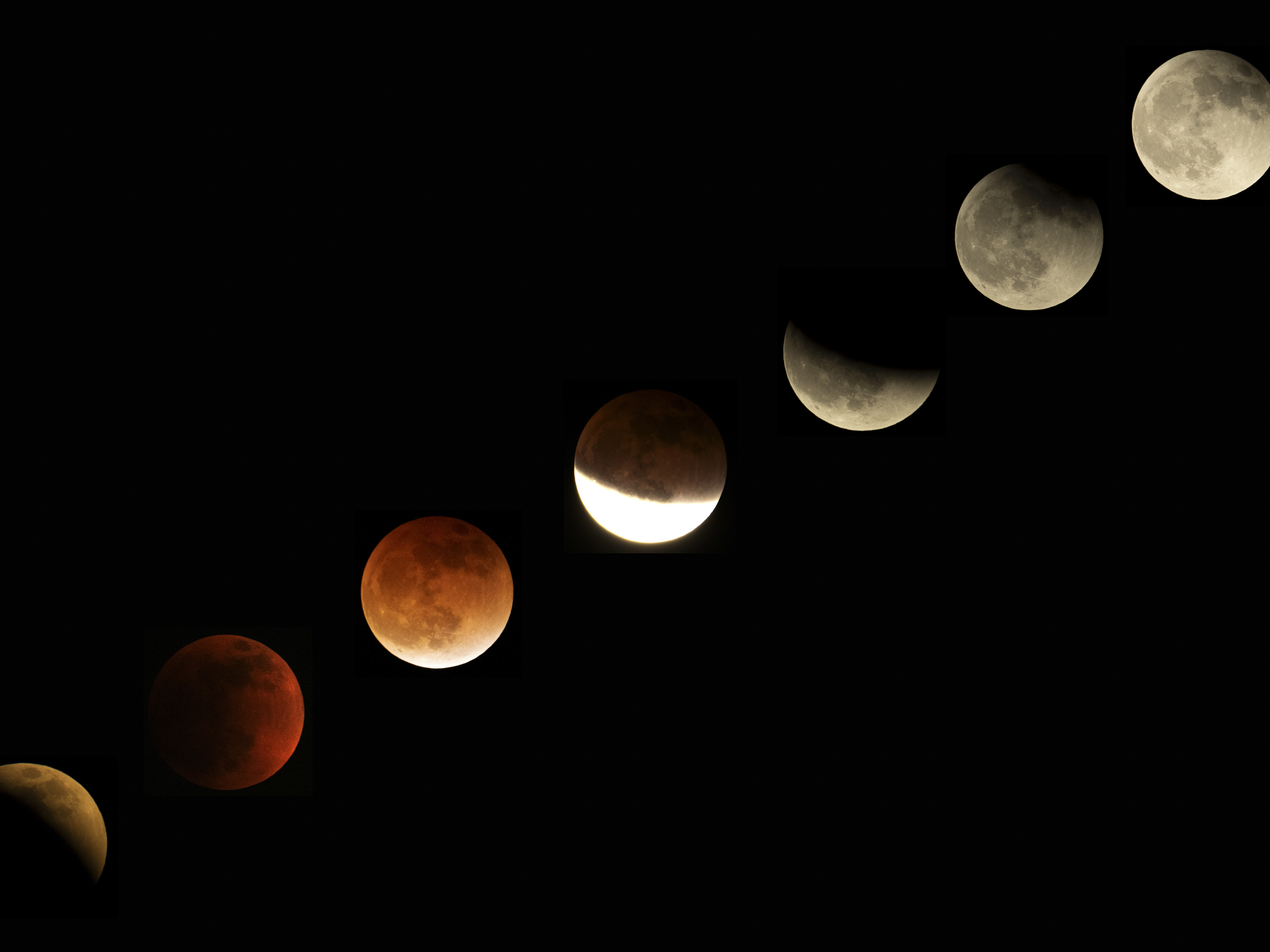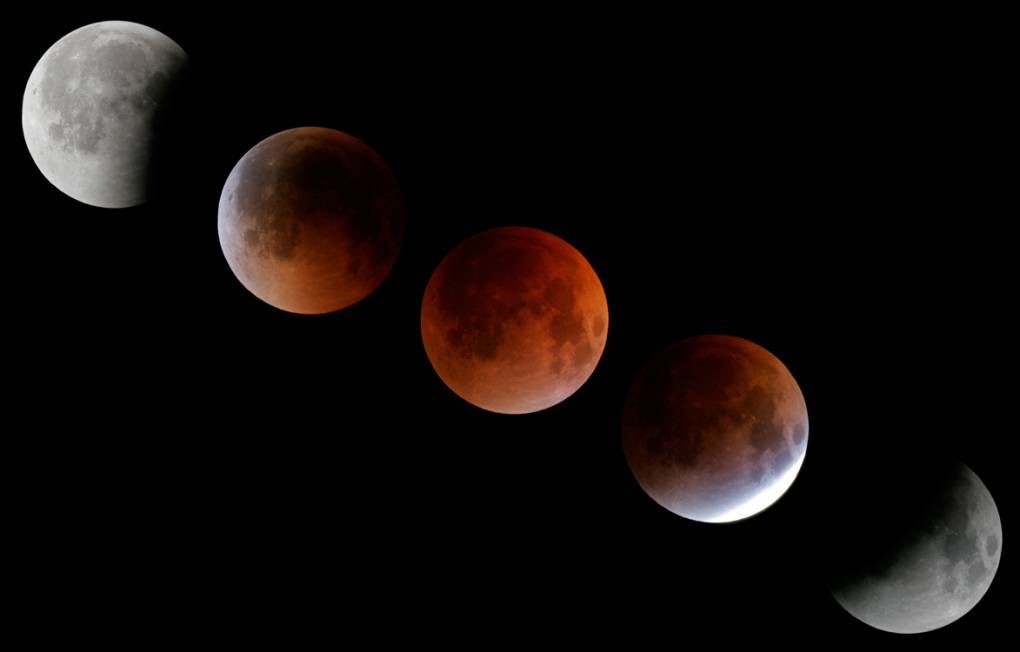What is a Blood Moon?

What is a Blood Moon? As ancient Mayans feared, Blood Moons aren't Moons with something monstrous and evil eating them; it's a trick of the light. Let me explain, what is a Blood Moon? Blood Moon is another term for a Total lunar eclipse. This eclipse changes the Moon's color. How? During a total lunar eclipse, the Earth comes between the Sun and the Moon in a row, preventing some light rays from reaching the Moon, but which light rays make their way to the Moon are reddish. We see the Moon from the Earth not wholly black. It gets a color that is orange-red or ruddy brown over a few hours. The phenomenon that a blood moon follows is the same as how we see sunrises and sunsets, as they are red too. Before discussing a Blood Moon, let's dive into the basics. Why is it called the "Blood" Moon? The Moon appears to have a reddish tinge in the Earth's shadow. Hence, we call it the Blood Moon. The color is not the same as blood. It has an orange or coppery hue that a complete Moon projects. The air molecules in the Earth's atmosphere scatter out blue wavelengths. The rest of the light, reaching from the edges of the Earth, projects the Moon with a red glow. What makes them appear red? When the total lunar eclipse occurs, the Earth prevents direct sunlight from reaching the Moon. However, not all of this light is blocked; some of it does achieve the Moon but indirectly. By indirectly, I mean through the Earth's atmosphere. The Earth's atmosphere allows light rays to pass through a spectrum that filters out selective colors, precisely those preceding the violet wavelength. In this filtration, called the Raleigh scattering, the red wavelength is least affected as it is longer than the blue wavelength. So the blue wavelengths scatter in the atmosphere while the red wavelengths refract or bend towards the Moon. Hence, giving the Moon a reddish color. Sometimes, depending on the atmospheric composition, varied colors get filtered, leaving the Moon with yellow, orange, or coppery brown color like that of a penny. Do you know that the same effect is implied during sunrise and sunset? Yes, the orange, yellow, and purple colors we observe during them are due to the same effect, giving them a mixed glow. On which factors does this red glow depend? The brightness and the visibility of the red glow of the Moon depend on the following factors in the Earth's atmosphere: Dust. Clouds. Volcanic activities can affect the hue of the Moon. The smoke and ash block enough light to make the Moon appear darker red or black.

Lunar Eclipses: We see the Moon from Earth since something is illuminating it with light, i.e., the Sun. When this light source gets blocked by an object (the Earth), it also blocks the view. A lunar eclipse occurs when the Earth, the Sun, and the Moon come in a row and align together. This alignment makes the Moon come in the shadow of the Earth. Conditions of a lunar eclipse: Happens only during a full Moon. It occurs after every 29.5 days or when the Moon completes its orbit around the Sun. This only happens for some months as the orbit of the Moon is tilted in an elongated circle as it is elliptical, making it difficult for the Earth, Moon, and the Sun to align in a row. There are three types of Lunar eclipses: Total, partial, and penumbral lunar eclipses. What is the total lunar eclipse? It is essential to know the two types of shadows that the Earth casts when discussing what a Blood Moon is. The two types are the smaller, darkest shade (umbra) and the more prominent, lighter shadow (penumbra). In a total lunar eclipse, the Moon comes in the shadow of the Earth ultimately, projecting it into the darkest part of the shadow known as the umbra (falling the temperature from 100°C in the light to -150°C in this shadow). Within this umbra (shadow), we see the Moon in a reddish tone, and because of this phenomenon, we call this Moon the Blood Moon.

What is a Super Blood Moon? The word "super" indicates that something in this phenomenon is extraordinary. On top of the reddish color of the Blood moon, super blood moons are bigger in size and much brighter. Why super? What do you think makes this super big and bright? The Moon rotates around the Earth in a circle or an orbit. This rotation has points of contact. Sometimes the Moon is farther or distant from the Earth, a situation called apogee. While at other times, the contact issue is nearer and closer to the Earth, called perigee. When the full Moon is at its closest point to the Earth, it is called SuperMoon. We see this Super Moon as tighter, bigger, and brighter than usual. What does the Earth look like during the Blood Moon? If we go to the Lunar surface, we'll see a fire ring surrounding the Earth. When we know this ring, there are sunsets or sunrises in our view everywhere we see this ring. The red color we see during a Blood moon is also a combination of sunrises and sunsets. Simply put, this Moon is red because the sunrises and sunsets on the Earth are also red. Final words: I hope the concept is now clear; what is a Blood Moon? All in all, Blood Moons are nothing to be afraid of, nor is it the end of the world. We should enjoy the view as it's a rare astronomical phenomenon and a magnificent view. Usually, we are in awe of sunsets and sunrises because of the amalgamation of different colors. Likewise, Blood Moons also have beautiful color hues like orange, brown, red, and coppery color. So, lift your head and gaze at it in wonder!